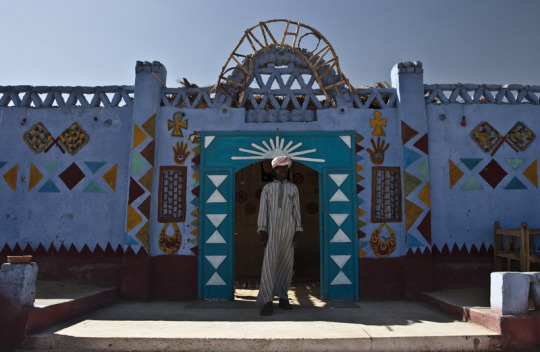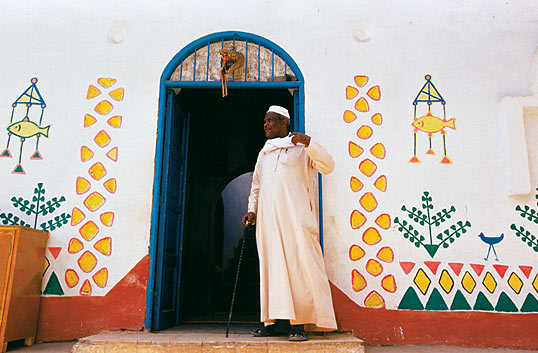Photo



Codex of Huamantla. Otomi Indians, Mexico. 1592.
807 notes
·
View notes
Photo

Applique costume and cloth mask, Atiere Ogwu. Costume is imported fabrics over native weaves, 160cm. Mask is cloth, yarn, wood, 56cm. Collected in Ugwoagbada Abbi in 1966 by H. M. Cole.
Igbo Arts at UCLA, Herbert M. Cole. African Arts, Vol. 18, No. 1 (Nov., 1984), pp. 64-69.
253 notes
·
View notes
Photo

An Igbo woman works at her loom in a traditional weaving establishment, Aba, Nigeria. Tortoise designs can be seen on the cloth. 1945-1975. Photo: IWM.
1K notes
·
View notes
Photo

The Wilbour Plaque. Egypt, Amarna Period, ca. 1352-1336 B.C.E. or slightly later.
The Wilbour Plaque is named for the early American Egyptologist Charles Edwin Wilbour (1833–1896), who acquired it in Egypt in 1881. The small slab is not part of a larger scene but complete as it was made. It was intended as a sculptor’s model, to be studied and imitated by students and beginning artists. With the hole at the top, it could be hung on a workshop wall. On the left is the head of a king, most probably a representation of Akhenaten, who wears the baglike khat headdress with a royal uraeus. Opposite him is the head of a queen wearing the ovoid cap crown often worn by Nefertiti, also with a uraeus. Both heads have ear holes for earrings. The carving is a splendid example of the elegant royal style that developed toward the end of the Amarna Period. (brooklyn)
Courtesy of & currently located at the Brooklyn Museum, USA. Via their online collections: 16.48.
740 notes
·
View notes
Photo

Torso of Akhenaten
18th Dynasty, New Kingdom
Amarna Period
c.1353-1336 BC
This torso from a statue of Akhenaten was found in the Sanctuary of the Great Aten Temple or in the dump south of the Sanctuary area of the temple. The heavy breasts and sagging belly of the king are typical of his representation, a feminized body that may suggest his fertile receptiveness to life and divine inspiration from the Aten. The statue appears to have been standing with its arms held naturally so that they hung slightly forward, a realistic pose developed by Amarna artists. Like all images of the king and queen, but not the princesses, the torso is inscriped with pairs of Aten cartouches on its chest. In addition the names of the god appear on the preserved upper arm (and would have appeared also on the missing arm and on both wrists), on the king’s belt, and at the top of the backpillar and .
(Source: The Met Museum)
673 notes
·
View notes
Photo

Akhenaten and Nefertiti, still holding hands almost 3000 years later
2K notes
·
View notes
Photo

The World’s First Female Author, Enhedu’anna
This ancient clay tablet from Babylonia is inscribed in Sumerian cuneiform and dates to the 20th-17th centuries BC. It mentions King Sargon’s daughter Enhedu'anna as the author of a hymn to the goddess Inanna. The tablet has lines written first by the teacher in the first column, with 2 students repeating the hymn in columns 2 and 3.
Enhedu’anna was the daughter of King Sargon of Akkad (2334-2279 BC), founder of the first documented empire in Asia. Enhedu’anna emerges as a genuine creative talent, a poetess as well as a princess, a priestess and a prophetess. She is, in fact, the first named, non-legendary author in history. As such she has found her way into contemporary anthologies, especially of women’s literature.
6K notes
·
View notes
Photo


Terracotta female figures with arms raised, possibly goddesses or priestesses
Cypro-Archaic I; 700 BC-600 BC; Cyprus; Kouklia
The British Museum
75 notes
·
View notes
Photo


Egyptian Silver Snake Bracelet, 300 - 100 BC
2K notes
·
View notes
Photo

Egyptian, First Intermediate Period, circa 2100–2040 B.C.
3 notes
·
View notes
Photo

Nubian, Napatan Period, reign of Anlamani, 623–593 B.C.
10 notes
·
View notes
Photo

Egyptian, New Kingdom, Dynasty 20, reign of Ramesses III, 1184–1153 B.C.
10 notes
·
View notes
























